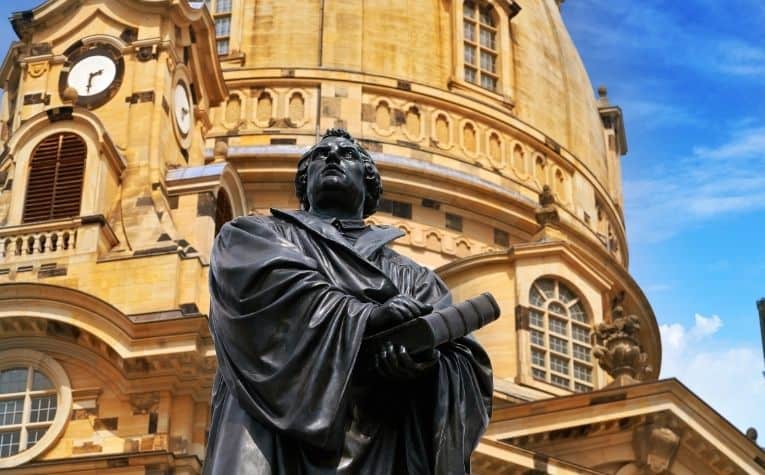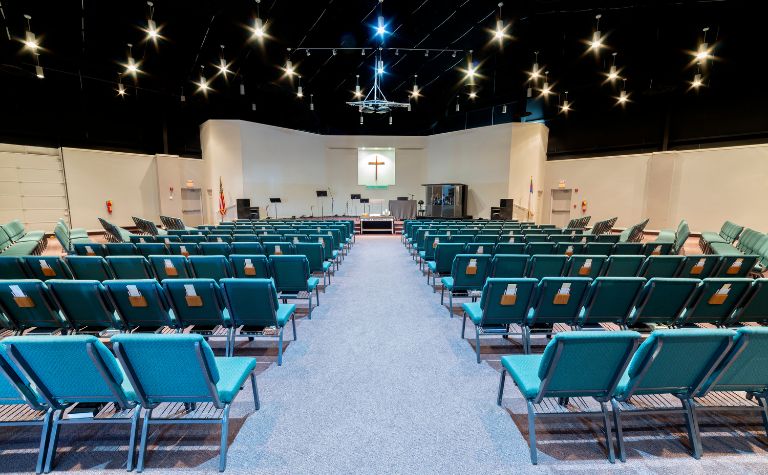The Lutheran tradition traces its roots to early 16th-century Germany. The Assemblies of God traces its roots to early 20th-century America. These two Protestant branches of the Christian faith share many core beliefs, yet they have important differences, too.
The Lutheran tradition in the 20th century is made up of multiple denominations, some of which maintain the teaching of the Bible and Martin Luther, while others place a higher value on conforming to modern sensibilities. The Assemblies of God is a united denomination that affirms Pentecostal theology.
How do Lutheranism and Pentecostalism compare in relation to their founders, origins, organization, and worldivew? What are the similarities and differences regarding their beliefs about God, Jesus Christ, the Bible, the Church and other doctrines? See the comparison charts below to learn more.

Assemblies of God vs. Lutheran: Comparison Chart
Assemblies of God and Lutheranism both have origin stories. One begins in Germany. The other begins in America. Both have passionate founders who persevered through significant hardship to establish their churches.
Yet the Assemblies of God and Lutheranism have important differences, which are evident in their historic belief statements. (Also see Assemblies of God vs. Presbyterian: What’s the Difference?)
| OVERVIEW | Assemblies of God | Lutheranism |
|---|---|---|
| Founder | Pentecostal pastors and leaders who had strong convictions that speaking in tongues was the evidence of post-conversion baptism of the Holy Spirit | Martin Luther (1483-1546) |
| Origin | Hot Springs, Arkansas, 1914 | 16th-century Germany |
| Early influencer(s) | Charles Fox Parham (1873-1929), Agnes Ozman (1870–1937), William Joseph Seymour (1870-1922) | Philip Melanchthon (1497-1560) |
| Significant writing outside the Bible | The 16 Fundamental Truths is the name of the denomination’s belief statement. | Luther’s shorter and large catechism, the Book on Concord, the Augsburg Confession |
| Organization | Assemblies of God churches are organized according to presbyterian polity (though not theology) at the national level as well as the regional or district level. Individual churches, however, are self-governing. | Churches exist in “synods,” i.e., conferences or districts; some denominations have bishops, some don’t; congregations typically vote on pastors. |
| Divisions | Compared with other large Protestant denominations, the Assemblies of God has been free of significant splits. The internal debate has occurred over a number of issues, but the denomination has avoided large protesting factions. | Lutheran denominations have split several times. Often, the root of the division is over maintaining the historical teachings of Lutheranism and a high view of Scripture or adopting modern theological and social sensibilities.* |
| Theological and Social worldview | The Assemblies of God denomination is evangelical and conservative, theologically and socially. The denomination ordains women to be pastors, which some Christians consider liberal and progressive. | It depends on the synod; the LCMS is conservative; the ELCA is moderate to liberal depending on the congregation* |
* There are several Lutheran denominations in America, and each has some influence outside the country through missions work of various kinds. The largest Lutheran denominations are,
- Evangelical Lutheran Church in America; 4.1 million members and 9,800 churches; founded in 1988
- Lutheran-Church Missouri Synod; 2.2 million members and 6,100 churches; founded in 1847
- Wisconsin Evangelical Lutheran Synod; over 385,000 members and 1,200 churches; founded in 1850
- Lutheran Congregations in Missouri for Christ; over 300,000 members and over 700 churches; founded in 2001
- North American Lutheran Church; over 140,000 members and over 400; founded in 2010
| Assemblies of God | Lutheranism | |
|---|---|---|
| Global membership | 69 million | 74 million |
| American membership | 3.1 million | estimated 7-10 million between all Lutheran denominations |
Also see Assemblies of God vs. Baptist: What’s the Difference?

Assemblies of God vs. Lutheran Beliefs, Theology, and Doctrine
Assemblies of God and Lutheranism have Protestant convictions, which signals their agreement on several key doctrines, including the Trinity, the identity of Christ, the inspiration of Scripture, the importance of the church, and the Second Coming of Christ.
They are important differences, too, such as spiritual gifts, water baptism, Spirit baptism, and the end times. Also see Assemblies of God vs. Catholic: What’s the Difference?
| BELIEFS | Assemblies of God | Lutheranism |
|---|---|---|
| Theology (general) | Assemblies of God is Protestant. They believe that salvation is by grace through faith in Christ alone and not according to works. | Protestant Christianity |
| Theology (specific) | Assemblies of God are Arminian. Within the framework of Arminianism, their belief systems is often referred to as “Pentecostal theology.” | “Lutheranism” isn’t just the name of the tradition but the theological system within it. It is neither Arminian nor Calvinist. |
| God | Trinitarian. There is one God who exists in three persons. | Trinitarian. There is one God who exists in three persons. |
| Is Jesus God? | Yes | Yes |
| Is the Holy Spirit God? | Yes | Yes |

| BELIEFS | Assemblies of God | Lutheranism |
|---|---|---|
| The Bible | #1 of The 16 Fundamental Truths state, “The Scriptures, both the Old and New Testaments, are verbally inspired of God and are the revelation of God to man, the infallible, authoritative rule of faith and conduct.” | Conservative synods affirm the authority, inspiration, and inerrancy of Scripture; moderate-liberal synods view the Bible as a helpful guide to belief and practice but an imperfect one at best. |
| View of the atonement | Assemblies of God believes in the penal-substitutionary atonement of Christ. His death was the punishment for sin, and he took the place of sinners on the cross. | Conservative synods affirm the truth of the Gospel and believe that Christ took the place of sinners and paid their penalty on the cross; moderate-liberal synods see the death of Christ as an example of dying for something you believe in. |
| Salvation | #5 of The 16 Fundamental Truths state, “Salvation is received through repentance toward God and faith toward the Lord Jesus Christ. By the washing of regeneration and renewing of the Holy Spirit, being justified by grace through faith, man becomes an heir of God, according to the hope of eternal life.” | Neither Calvinist nor Arminian, but “Lutheran”; conservatives believe in election but don’t define it the same way as Calvinists. |
| Spiritual gifts | Assemblies of God believes that all spiritual gifts mentioned in the Bible are operational today, including speaking in tongues, divine healing, and miracles. | The vast majority of Lutherans subscribe to the historic teaching of the denomination that certain spiritual gifts, like speaking in tongues, were for the first-century church. |
| Water Baptism | Believer’s baptism; only professing believers, not infants, are baptized. Baptism isn’t necessary for salvation. | Pastors baptize infants who receive the gift of regeneration of the Holy Spirit; faith is necessary for grace to be conveyed (unlike Catholicism). |
| Communion | #6 of The 16 Fundamental Truths state, “The Lord’s Supper, consisting of the elements — bread and the fruit of the vine — is the symbol expressing our sharing the divine nature of our Lord Jesus Christ, a memorial of his suffering and death, and a prophecy of His second coming, and is enjoined on all believers ’till He comes!'” | The real body and blood of Christ are believed to be “in, with, and under” the bread and cup; this view is often called “consubstantiation.” |
| Eschatology | #14 of The 16 Fundamental Truths state, “The second coming of Christ includes the rapture of the saints, which is our blessed hope, followed by the visible return of Christ with His saints to reign on earth for one thousand years.” | Lutheranism is Amillennial, meaning it interprets the 1,000-year period described in Revelation 20:1-6 figuratively and defines it as the time between Christ’s first and second coming (i.e., the Church Age) |
References:
[1] Source
[2] Source
[3] Source
Related Questions
The Assemblies of God and Baptist traditions are sizable and significant branches of Protestant Christianity. They each have a fascinating history in Europe, America, and as of the twenty-first...
The Assemblies of God and the Church of God (Cleveland, Tennessee) are two of the oldest Pentecostal denominations in the world. There is a lot that unites these Protestant-Christian traditions, yet...
